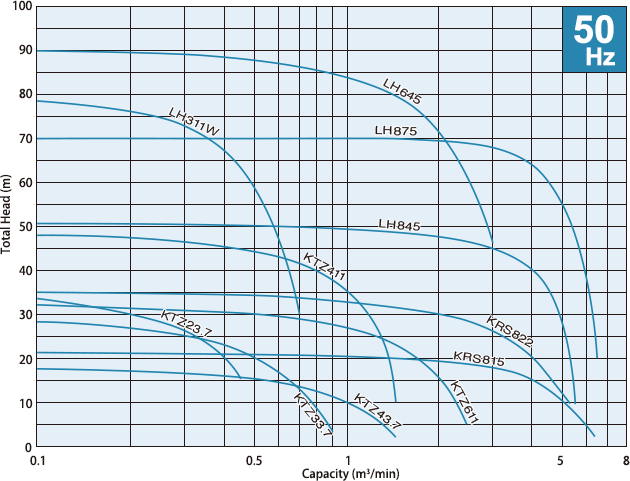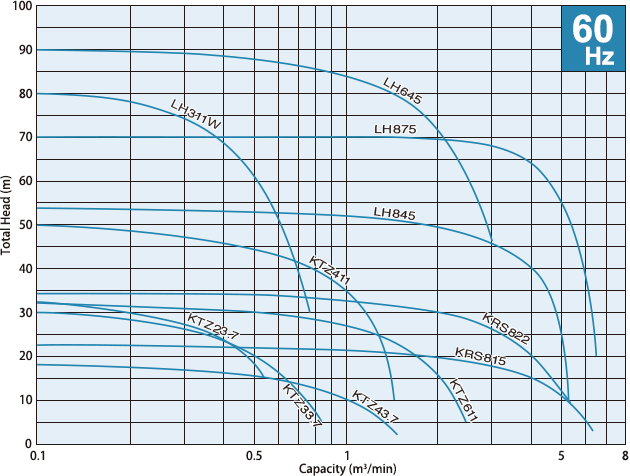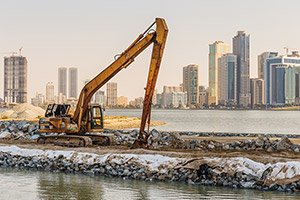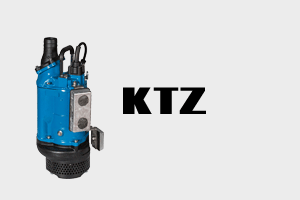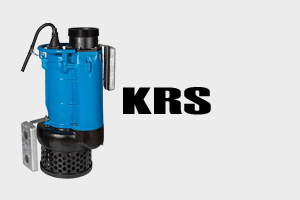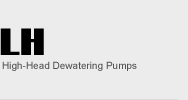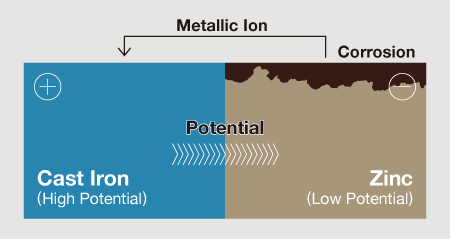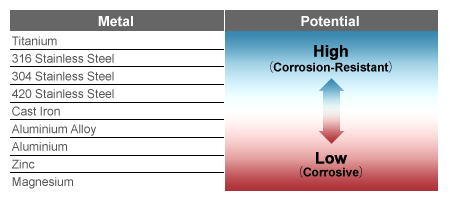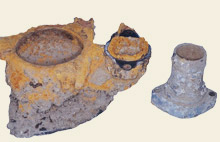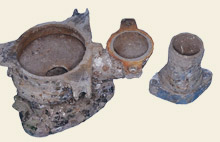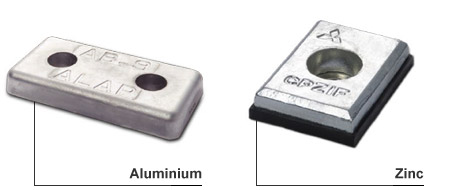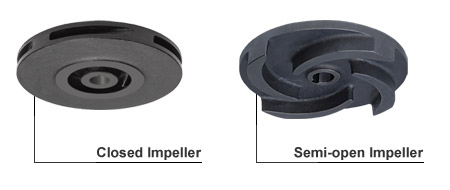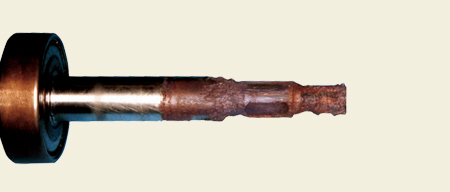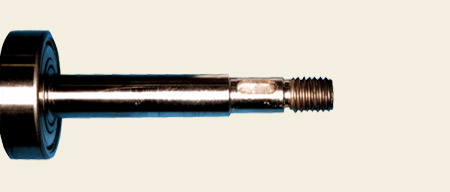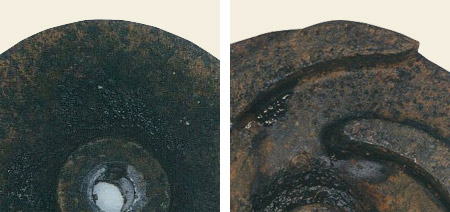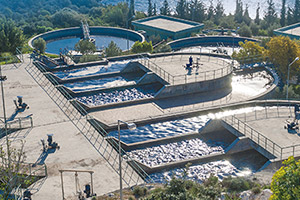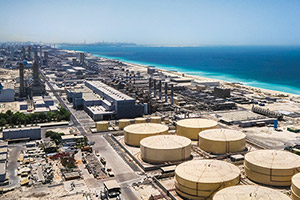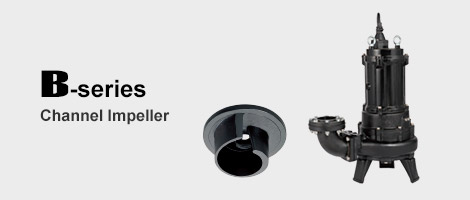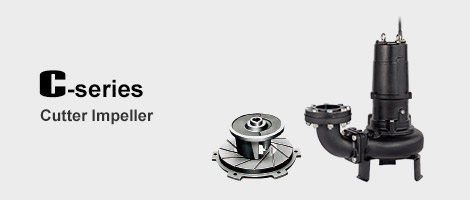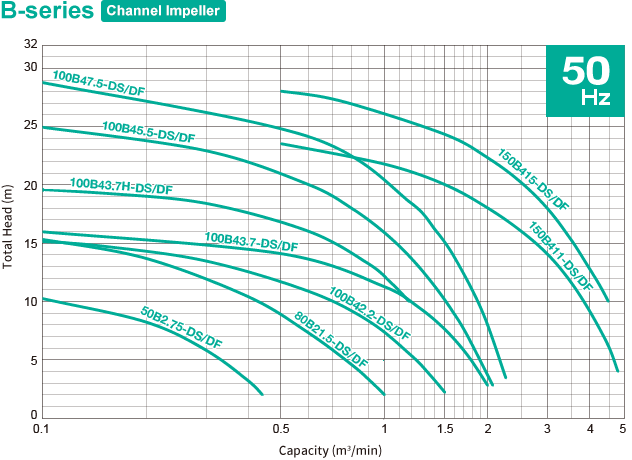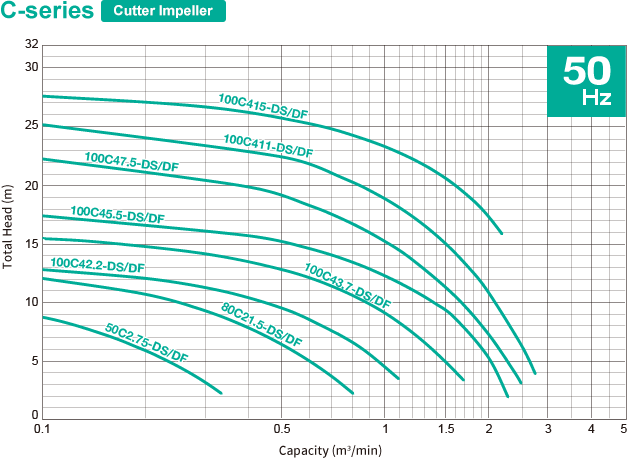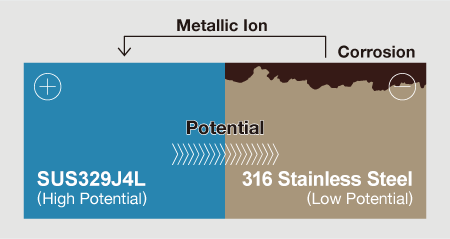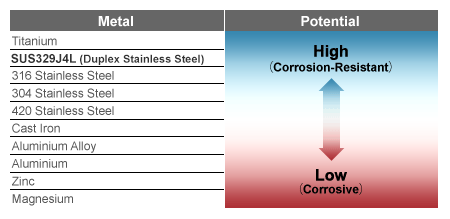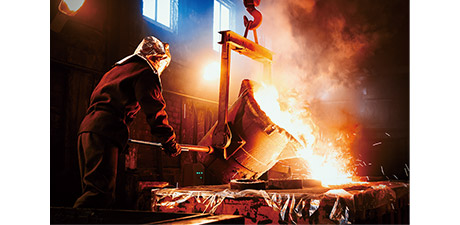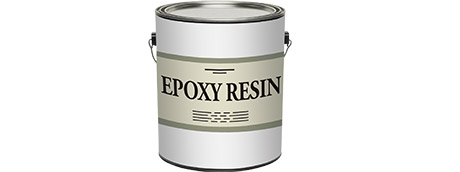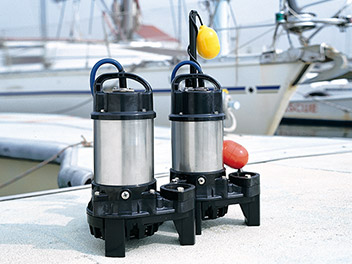Handling seawater with submersible pumps for a long term period is not an easy task. When pumps are not equipped with adequate specifications for use in seawater, corrosion in metal sections may cause the pumps to become worse in terms of performance, or in the worst case scenario, suffer a breakdown.
Supported by demonstrative experiments using seawater over a long time, Tsurumi has continued unremitting research into submersible seawater-resistant pumps, combining both corrosion resistance and durability. As a result, by giving the maximum possible consideration to economy, reliability and dependability, Tsurumi has successfully developed its original submersible seawater-resistant sewage pumps, which have achieved the upgrading of pumps to a level that allows them to withstand even the seawater.
Tsurumi offers a product lineup comprising two series: B-series pumps equipped with channel impeller and C-series pumps equipped with cutter impeller, with the motor output varying from 0.75 up to 15 kW depending on the model. As part of the seawater-resistant specifications, these pumps are provided with a Duplex stainless steel shaft, a frame and a casing made of FC250 cast iron, 3-layered Epoxy resin paint coating, and a Galvanic anode (optional), with a choice of either 316 stainless steel (DS version) or FC250 (DF version) as the impeller material. In addition, these pumps are equipped with an anti-wicking cable, motor protector, dual inside mechanical seals with silicon carbide faces, Oil Lifter and the like, as in the case with standard Tsurumi products.
Submersible seawater-resistant sewage pumps have a wide range of uses including sewage drainage mixed with seawater, transfer of sewage/wastewater from water treatment facilities in plants and commercial buildings, water intake/discharge at pumping stations and shipyards in coastal areas, desalination plants and the like.
